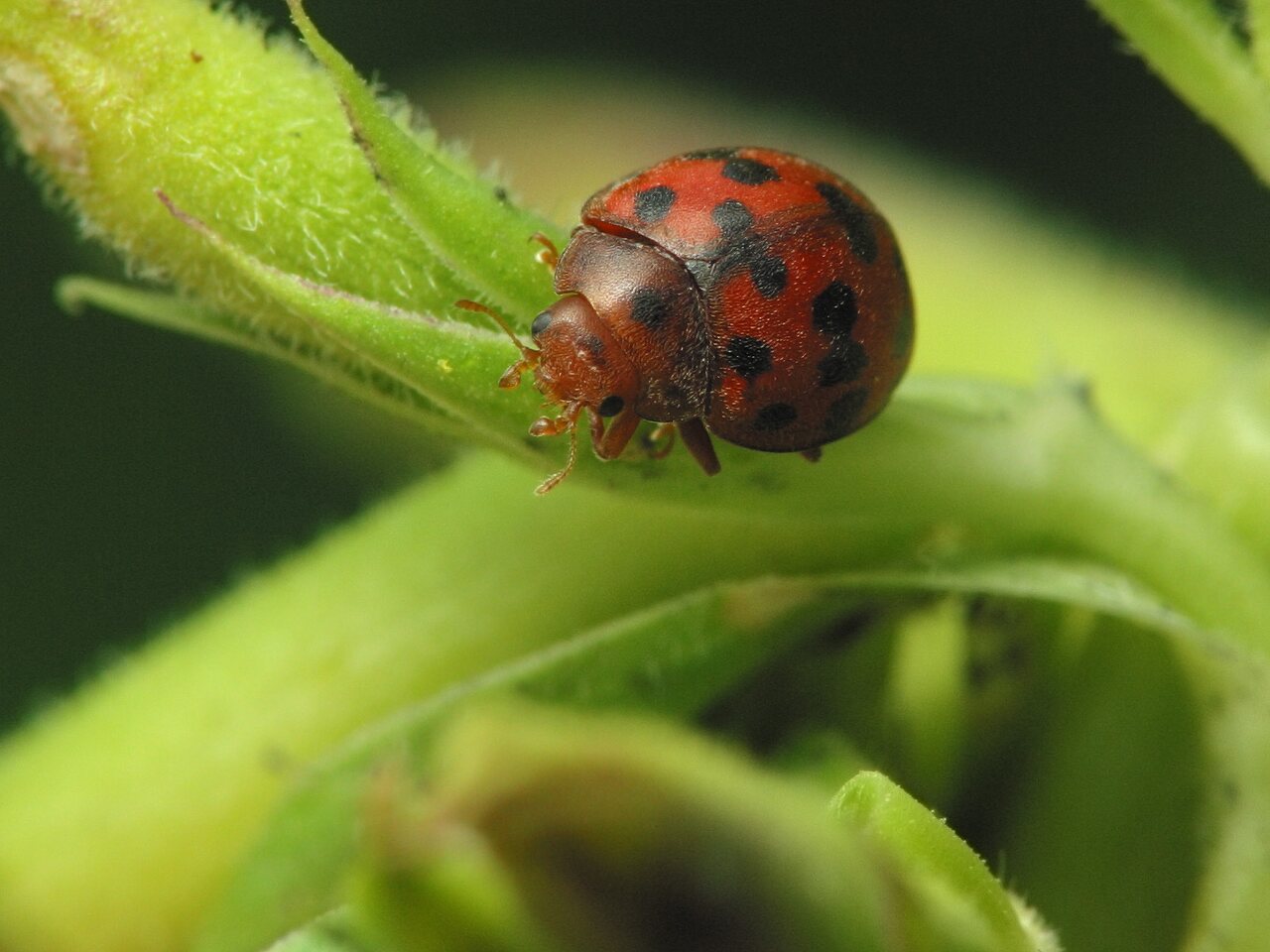
Subcoccinella vigintiquatuorpunctata · dvidešimt keturtaškė boružė
- 24-spot ladybird
- Vierundzwanzigpunkt-Marienkäfer, Luzerne-Marienkäfer
- dvidešimtketurtaškė boružė
- biešu mārīte
- owełnica lucernianka, biedronka dwudziestoczterokropka
This is a very small (3 or 4 mm) orange-red ladybird marked with black spots which may vary in number. The head and pronotum are orange-red the same as the elytra and this ladybird is also hairy which gives it a dull appearance. The legs are also orange. Adults feeds on fungal moulds on plants. Larvae feed only on the mycelium of Erysiphales. The insects carry spores of the fungi.
Kūnas 3-40 mm, raudonai rudas, tankiai taškuotas. Priešnugarėlės dėmelės neryškios. Ant kiekvieno antsparnio yra keturios skersinės eilės juodų dėmelių, po 3 eilėje. Kiaušinėliai geltoni. Lervos apie 5-6 mm ilgio, plačios, plokščios, siaurėjančios į abu galus, gelsvos, apaugusios šakotais spygliais. Turi galvą ir krūtinės kojas.
Žiemoja vabalai po nukritusiais lapais ir velėnoje, laukų pakraščiuose, pakelėse, ežiose. Patelės kiaušinėlius deda gegužės mėn. krūvelėmis ant lapų. Išsiritusios lervos skaptuoja lapų minkštimą. Lapuose matomos nugrandytos išilginės juostelės. Apatinės lapų pusės epidermis lieka paparstai nepaliestas. Stipriau pakenkti lapai nudžiūsta. Kenkia liucernoms, rečiau bulvių ir runkelių lapams. Lėliukėmis lervos virsta tarp pažeistų lapų. Lietuvoje per metus išsivysto 1-2 generacijos.
‥
0 comments
Add a comment